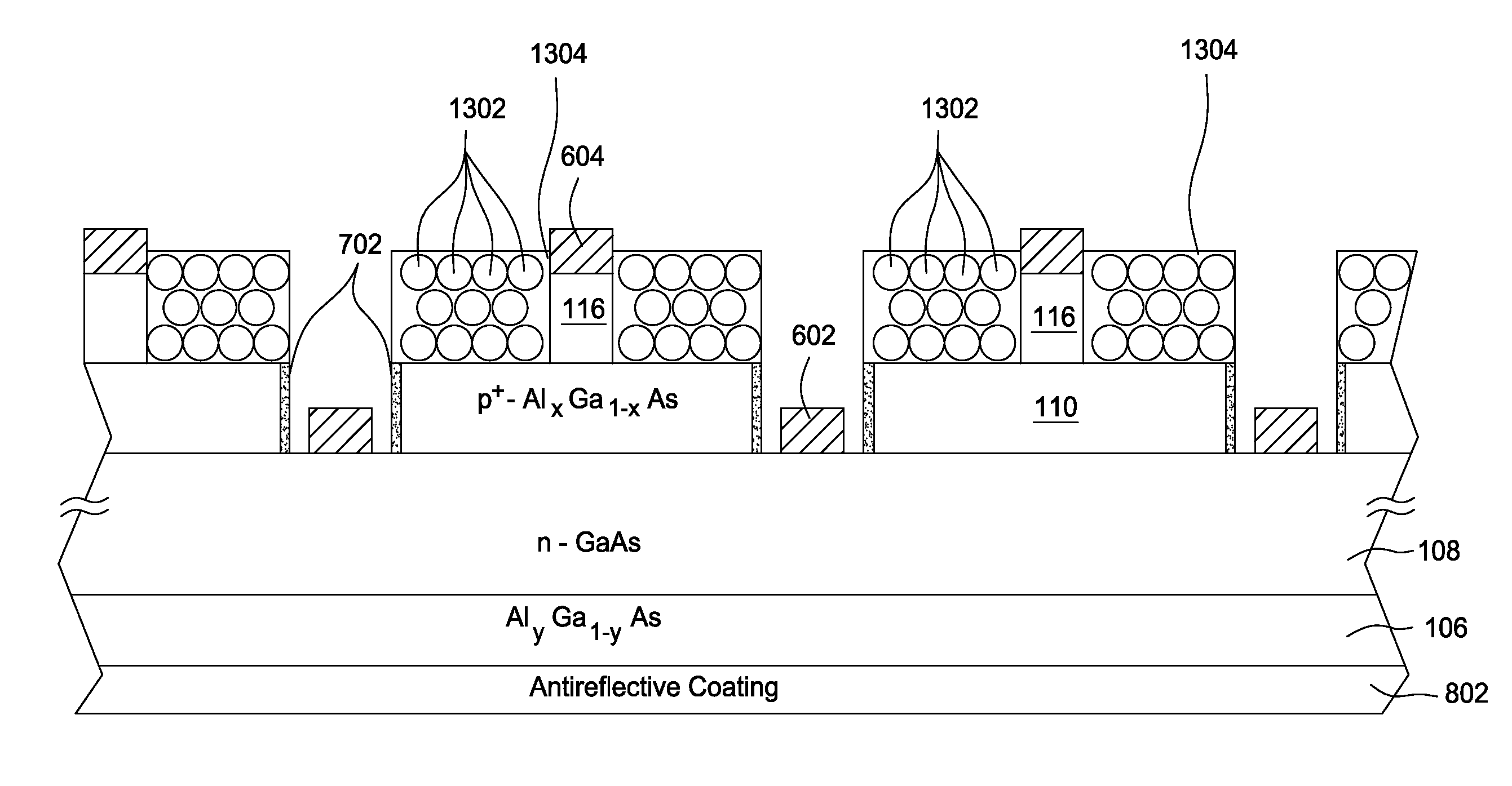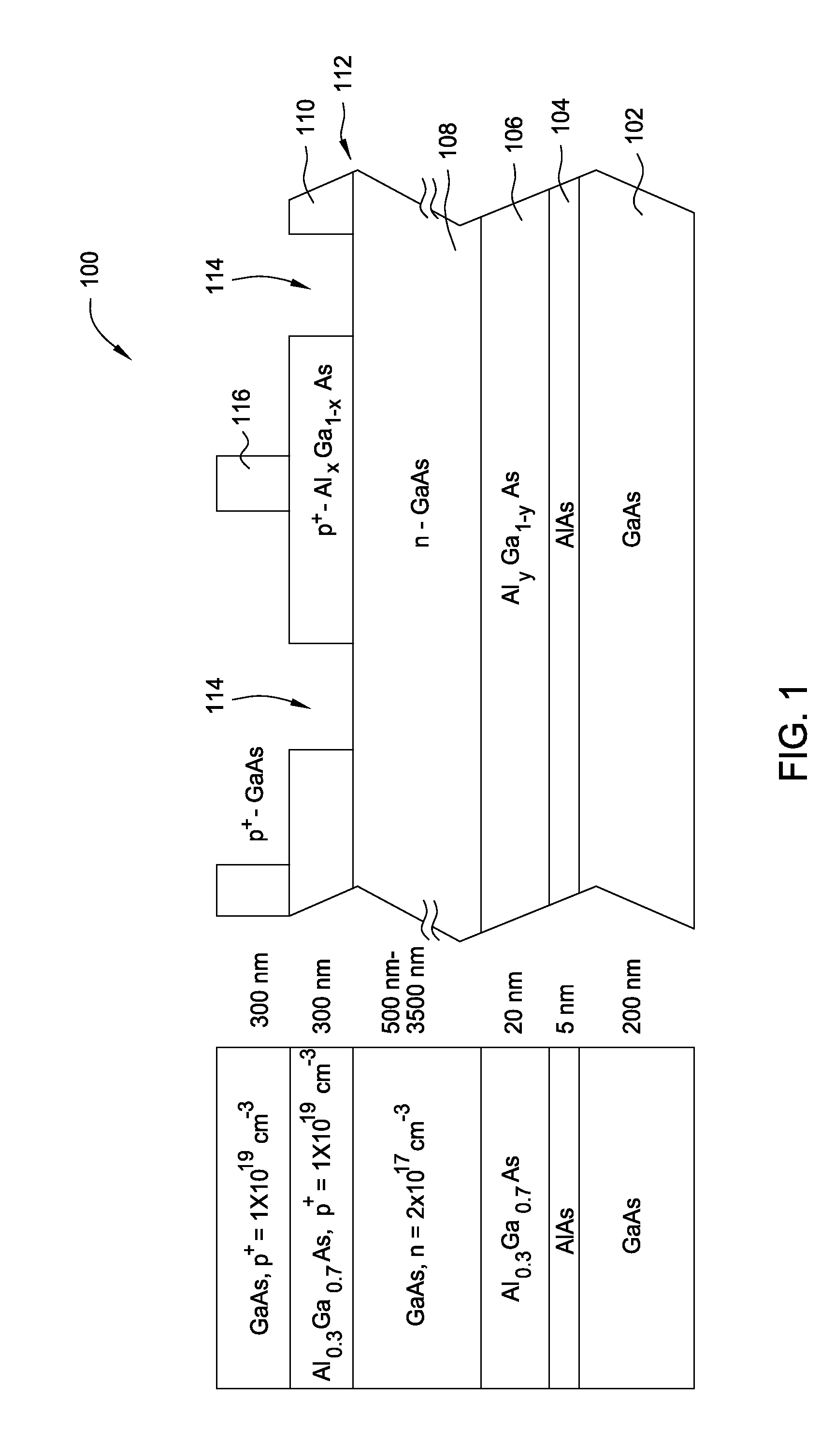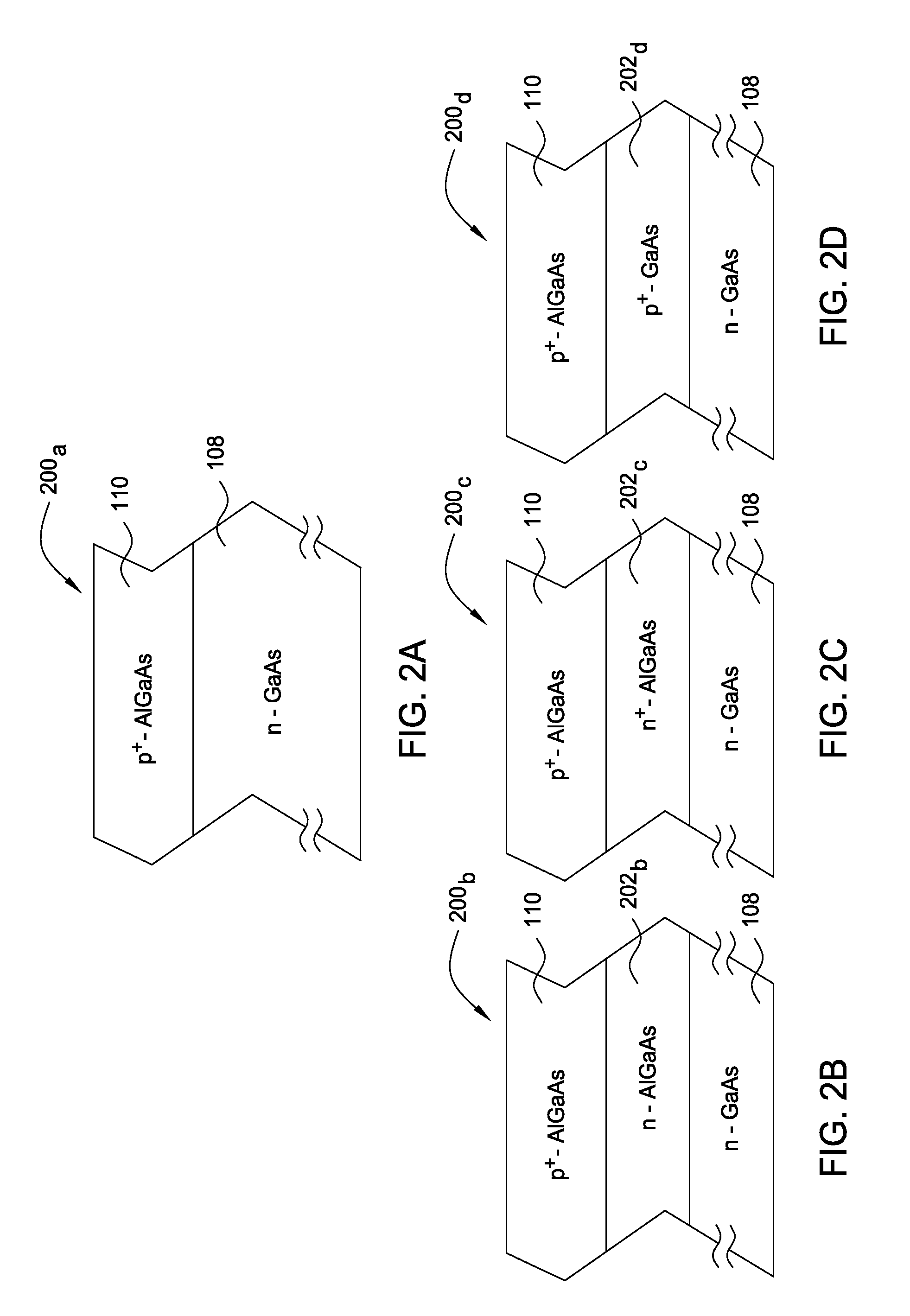Photovoltaic device
a photovoltaic and device technology, applied in the direction of basic electric elements, semiconductor devices, electrical equipment, etc., can solve the problems of limiting the applications to which solar cells may be suited, preventing solar cells from becoming a mainstream energy source, and the cost of producing solar cells, so as to achieve the effect of increasing efficiency
- Summary
- Abstract
- Description
- Claims
- Application Information
AI Technical Summary
Benefits of technology
Problems solved by technology
Method used
Image
Examples
Embodiment Construction
[0029]Embodiments of the present invention provide techniques and apparatus for converting electromagnetic radiation, such as solar energy, into electric energy with increased efficiency when compared to conventional solar cells.
An Exemplary Thin Absorber Layer
[0030]FIG. 1 illustrates various epitaxial layers of a photovoltaic (PV) unit 100 in cross-section during fabrication. The various layers may be formed using any suitable method for semiconductor growth, such as molecular beam epitaxy (MBE) or metalorganic chemical vapor deposition (MOCVD), on a substrate (not shown).
[0031]To form the PV unit 100, one or more buffer layers may be formed on the substrate. The purpose of the buffer layer(s) is to provide an intermediary between the substrate and the semiconductor layers of the final PV unit that can accommodate their different crystallographic structures as the various epitaxial layers are formed. Having a thickness of about 200 nm, for example, a buffer layer 102 may comprise a...
PUM
 Login to View More
Login to View More Abstract
Description
Claims
Application Information
 Login to View More
Login to View More - R&D
- Intellectual Property
- Life Sciences
- Materials
- Tech Scout
- Unparalleled Data Quality
- Higher Quality Content
- 60% Fewer Hallucinations
Browse by: Latest US Patents, China's latest patents, Technical Efficacy Thesaurus, Application Domain, Technology Topic, Popular Technical Reports.
© 2025 PatSnap. All rights reserved.Legal|Privacy policy|Modern Slavery Act Transparency Statement|Sitemap|About US| Contact US: help@patsnap.com



